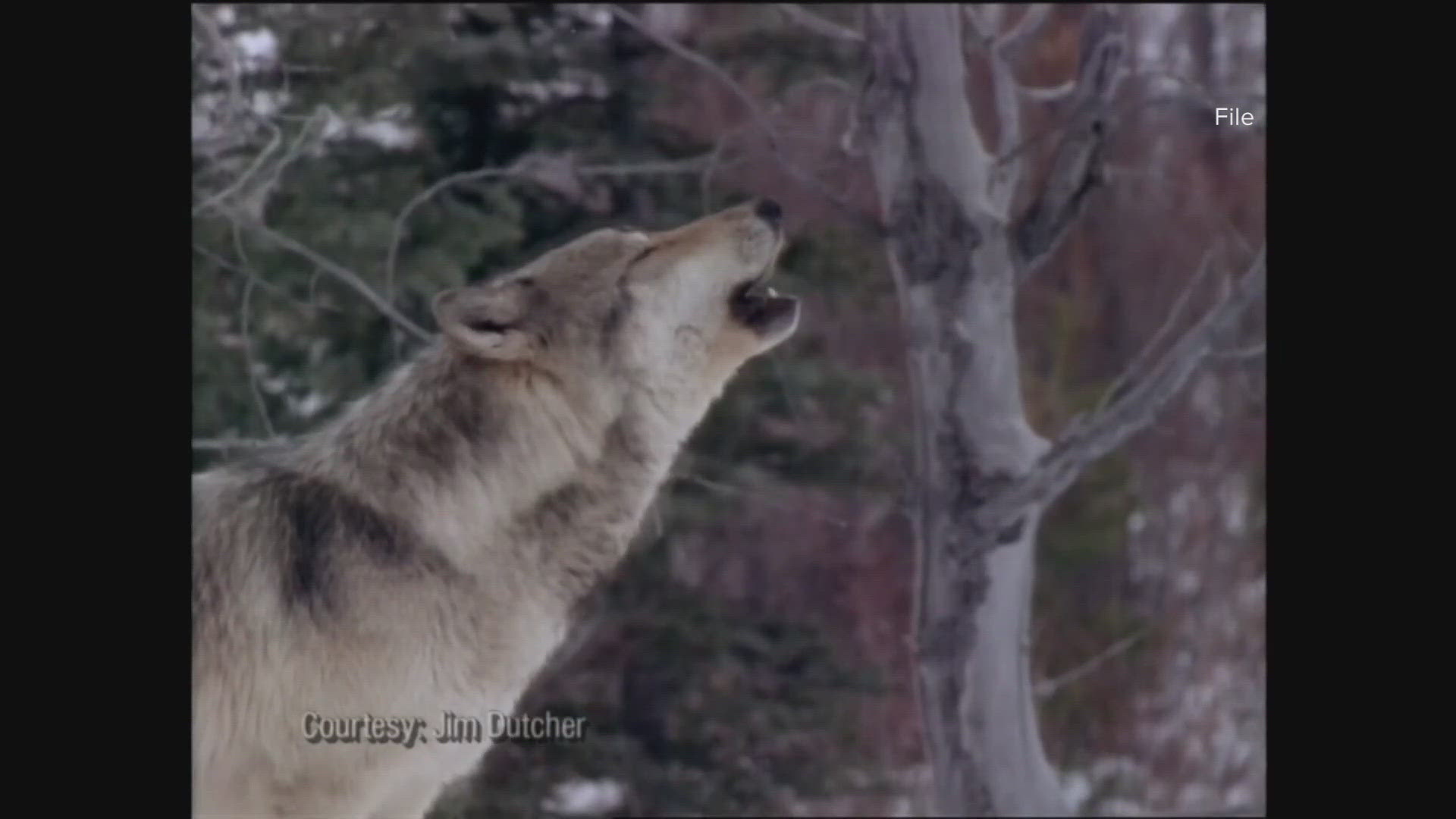STEVENS COUNTY, Wash. — On July 19, Washington Department of Fish and Wildlife Commission members held a meeting to discuss the future of predators in the state. They talked about a potential permit for a spring black bear depredation, changing cougar hunting seasons and potentially reclassifying gray wolves from an endangered species to a sensitive classification.
Under the Washington Administrative Code, if a wolf tries to attack your pets, your family or yourself, you are allowed to kill a singular gray wolf without a permit in an area of the state where the gray wolf is not listed as endangered or threatened.
Other rules follow that you have to report the incident within 24 hours and you must allow department access to where the wolf was killed.
During the commissioner meeting, one of the main motions was to move gray wolves from under the endangered classification to the sensitive classification.
The main difference between the two classifications is that under the endangered classification, lethal permits are typically not issued if a wolf is threatening your livestock as opposed to the sensitive classification where livestock owners may be issued a permit for lethal control. Other differences include jail time and the price of fines associated with killing these wolves.
When it came down to voting for reclassifying gray wolves, commission members voted 5 to 4 against it.
"The standard is the biological status of the species in my understanding is too uncertain to change the listing," says Melanie Rowland, WDFW commission member.
The main argument against reclassifying the wolves was that there hasn't been any new updates from the pre-existing wolf recovery plan, which is solely based on biological evidence from across the state versus certain areas.
Those who voted for the reclassification argue that while the recovery plan is an important document, it is an adaptive document that should evolve with time.
"It just seems to me that if you want to stick to the wolf plan, it's sort of like saying I'm going to invest in the stock market today based on information that I had 12 years ago," says John Lehmkuhl, WDFW commission member.
Stevens County sheriff, Brad Manke, sent out a press release after 16 eastern Washington sheriffs gathered in Ritzville to address growing concerns about predatory animals like wolves and cougars in their respective communities. This is in response to the WDFW meeting and vote as well as other decisions made about cougar hunting season.
In the press release, Sheriff Manke says that in eastern WA wolves have grown past their target objective and that this decision by the Commission has been in direct disregard to science and their own experts' recommendation.
WDFW sent KREM 2 a statement responding to this claim saying that while they have reached recovery objectives for wolves in eastern Washington, they have not reached statewide recovery objectives.
"In Washington, species are listed statewide versus a portion of the state. We do not expect a continued increase in wolf populations in eastern Washington where the majority of wolf packs currently reside but do expect them to spread out across the state eventually, helping to reach statewide objectives," says Staci Lehman, WDFW Communication Manager for eastern WA District 1.
The Commission also outlined new cougar hunting season regulations which are from Sept. 1 to March 31. The new rule sets a harvest cap of 13% in a given population management unit. When that cap is reached, the WDFW director will close the PMU for the rest of the season.
On September 26, the Wildlife Committee will be in Spokane to talk with the public and local leaders about wolves and livestock interaction protocol.

